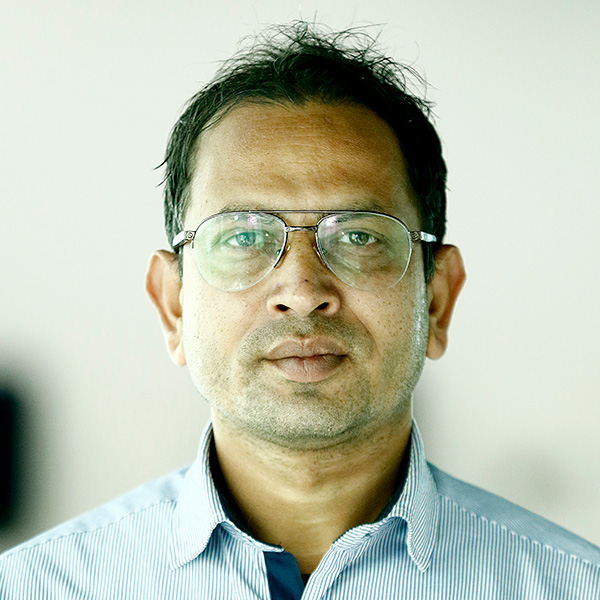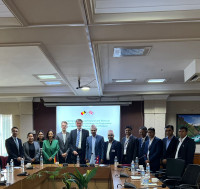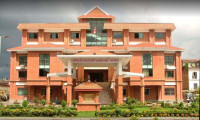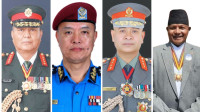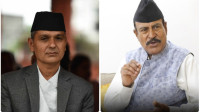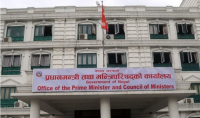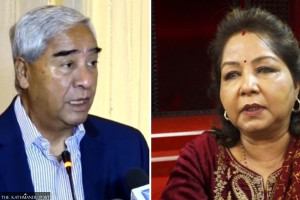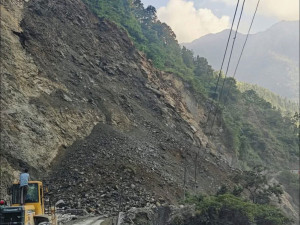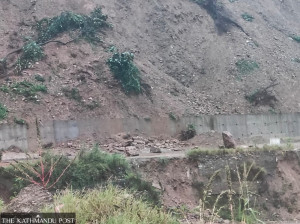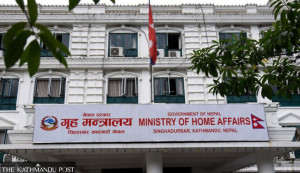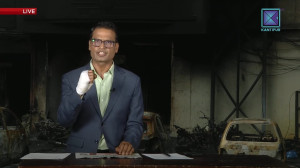National
With a new managing director, Nepal Airlines looks set to fly into turbulence
The appointment, when there is already an executive chairman, brings a sense of déjà vu when dual power centres brought the flag carrier to a standstill in the past.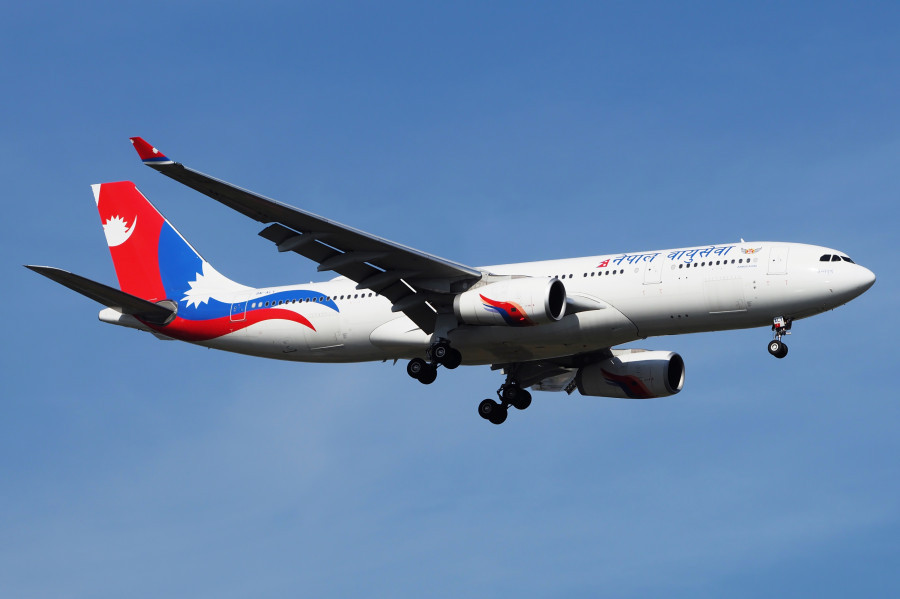
Sangam Prasain
Soon after Tourism Minister Yogesh Bhattarai took office in July last year, he constituted a five-member expert panel to recommend reforms at Nepal Airlines.
In September last year, the committee, headed by Sushil Ghimire, a former tourism secretary, recommended in its 46-page report immediate reform measures for 13 areas. Appointing the chief of the ailing national flag carrier through an open competition, rather than on political preference, was one of them.
Seven months later, in April this year, Ghimire himself was appointed the executive chairman, and he accepted the political appointment, against what he himself had recommended.
Then on Thursday, the Cabinet went one better. It appointed Prakash Poudel, who is also known as Dim Prasad, as the managing director of Nepal Airlines for four years. Poudel was a member of the five-member committee under Ghimire.
That’s quite a turn of events, say observers. There, however, is nothing surprising about this, according to them.
“It’s not a new thing in Nepal. It keeps on happening,” said Bimal Wagle, former chairman of the Public Enterprises Board, which was once entrusted with the task of appointing chiefs of public enterprises, like Nepal Airlines, through competition. “The reforms are only in paper, not in practice.”
Politicians time and again have made promises to revive Nepal Airlines, but actually it’s only empty words, according to Wagle.
“Minister Bhattarai has just followed the tradition. Both–the dual power system and political appointments–are old stories in Nepal Airlines, followed by every successive government, and that’s gradually killing what was once Nepal’s finest company,” said Wagle.
Today Nepal Airlines has become a highly leveraged company with debt reaching critical levels of nearly Rs46 billion.
Since 2002, when a high-level committee led by former chief secretary Damodar Prasad Gautam submitted a report to reform Nepal Airlines, there have been over half a dozen reform recommendation reports prepared by committees appointed by different governments but all of them are gathering dust on the shelves.
“Implementing recommendations in practice is different from making them,” said Wagle.
But Thursday’s appointment of Poudel, a chartered accountant by profession with close links with the ruling Nepal Communist Party (NCP), has a twist.
It is unclear who will ultimately call the shots–Ghimire as the executive chairman or Poudel as the managing director.
Buddhi Sagar Lamichhane, joint-secretary at the Tourism Ministry who is also a board member of Nepal Airlines, said that Poudel has been given the executive power, which means the decision-making power, and that the role of Ghimire will be limited as chairman, which is a ceremonial post.
But if past records are anything to go by, there could be a clash between the two top positions in the government-owned airline company.
Back in 2008-2011, Nepal Airlines had witnessed a constant internal conflict because of the strife between the two top executives–Sugat Ratna Kansakar and captain Kul Bahadur Limbu, a pilot at the company.
The infamous Kansakar-Limbu tussle brought the national flag carrier to its knees, and it rapidly lost its market share both in the international and domestic sectors.
The dispute began in December 2008, when the Maoist-led coalition government appointed Kansakar as the managing director in place of Limbu.
Limbu, subsequently, filed a case at the Supreme Court which reinstated him in June 2009.
However, on July 23, 2009, the Cabinet named Kansakar as the executive chairman, leaving Limbu without any power.
Tensions between the two always made headlines, with each leaving no stone unturned to shame the other.
One particularly jarring incident was when Kansakar was arrested by the Commission for Investigation of Abuse of Authority (CIAA) on charges of irregularities in an Airbus purchase deal. Limbu publicly gloated over the arrest.
Tensions flared when the Special Court gave Kansakar a clean chit, and the Tourism Ministry reinstated him as executive chairman. Limbu reacted by locking up the chairman’s chamber to prevent Kansakar from entering.
When the clash reached fever pitch, the government was forced to take the drastic step of firing both men.
The Cabinet then appointed Manarup Shahi as the new executive chairman in June 2011. Shahi, however, had to flee following a CIAA probe into the authenticity of his academic certificates.
Limbu’s tenure expired.
The government then decided to select Nepal Airlines’ next boss through open competition. Madan Kharel, who had served at the company for many years and was a director at the time, was appointed managing director in December 2012.
But the balance of power did not last long.
On June 4, 2014, then tourism minister Bhim Prasad Acharya decided to revive the dual executive power system appointing Shiva Sharan Neupane as executive chairman even though it already had a managing director as the chief executive.
The proposal was rejected by the Cabinet.
In August, Acharya tabled another proposal at the Cabinet to appoint Neupane, a relative of former prime minister Jhala Nath Khanal, as the chairman. This time, the Cabinet approved the proposal.
Neupane’s entry into the boardroom was the first step towards having a distinct chairman, a post traditionally held by the tourism secretary.
The government appointed Neupane as chairman as the post had become vacant after tourism secretary Sushil Ghimire retired.
Neupane wanted Kharel to allow him to oversee three of the dozen-odd departments at the airlines. Kharel refused. In retaliation, every proposal that was tabled at the board was rejected by Neupane, the chairman.
The tussles led Kharel to eventually resign in March 2015.
In May 2015, the Cabinet reappointed Kansakar as the managing director of the corporation.
The government removed Neupane in 2016.
But again in September 2018, the incumbent government revived the dual executive power system at Nepal Airlines. The Cabinet appointed Kharel as the executive chairman, leaving incumbent managing director Kansakar as a ceremonial chief executive with no decision-making authority. This time, tourism secretary Krishna Devkota was removed as chairman to make room for Kharel.
Kansakar’s four-year term ended last year.
Kharel quit in January this year after Tourism Minister Bhattarai repeatedly asked him to resign. He tendered his resignation at the Prime Minister’s Office. He has not been in the scene since.
Poudel, who is from the private sector background, is the managing director of Eastern Agencies, sole distributor for Volvo-Eicher commercial vehicles in Nepal, and has little knowledge about the aviation industry and is barely aware of the history of Nepal Airlines.
He, however, said that he is confident he could run the ailing flag carrier.
And he has already started asserting his power. “With my appointment as managing director he [Ghimire] is without power,” Poudel said.
The Post’s repeated attempts to contact Ghimire failed.
“Whether it is ceremonial or executive, two power systems are always harmful for any organisation,” said Ashok Pokhrel, who represented the private sector on the Nepal Airlines board. “The disadvantage of a dual power system is that it creates groupism, and ultimately it begets conflict.”
Poudel said he is yet to get his appointment letter. But he already has “several plans” to revive the ailing flag carrier.
“There is controversy surrounding the Chinese aircraft and they have been grounded for a long time. I will work to make a proper plan to manage these planes,” Poudel told the Post. “We also need new planes in both international and domestic sectors. We must plan for further expansion.”
Whether the old incidents of power tussle will repeat at Nepal Airlines or whether Poudel will be able to work on his plans, time will tell.




 16.07°C Kathmandu
16.07°C Kathmandu